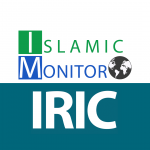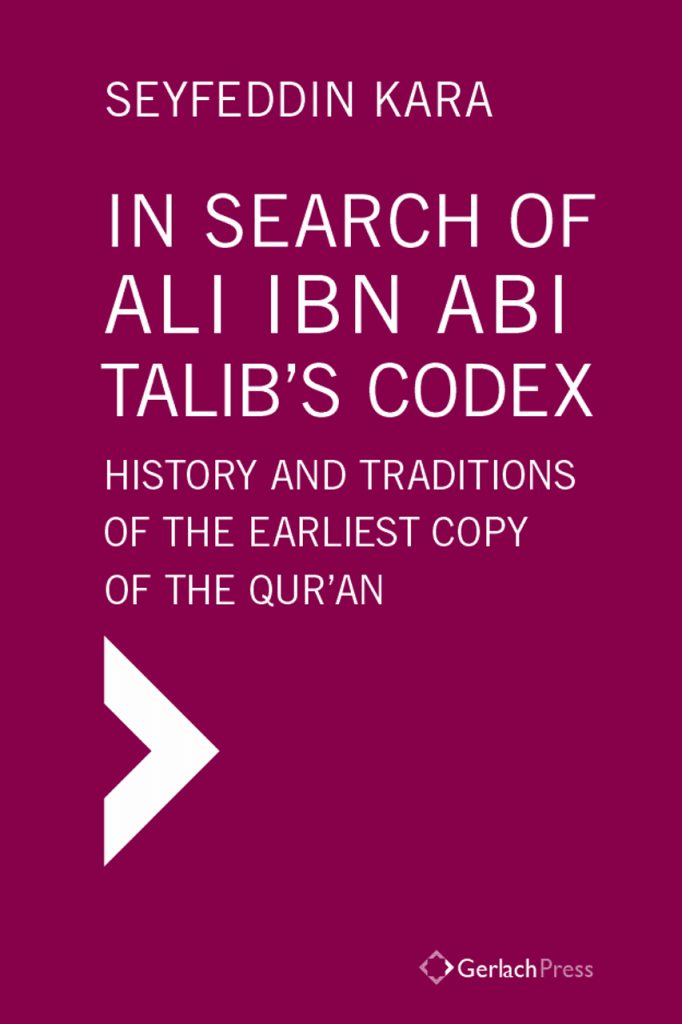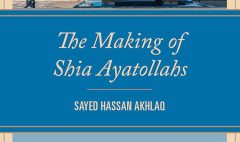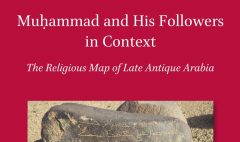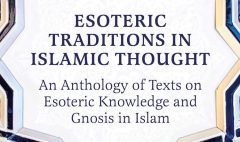In Search of Ali Ibn Abi Talib’s Codex: History and Traditions of the Earliest Copy of the Qur’an
August 20, 2018 2023-10-08 8:40In Search of Ali Ibn Abi Talib’s Codex: History and Traditions of the Earliest Copy of the Qur’an
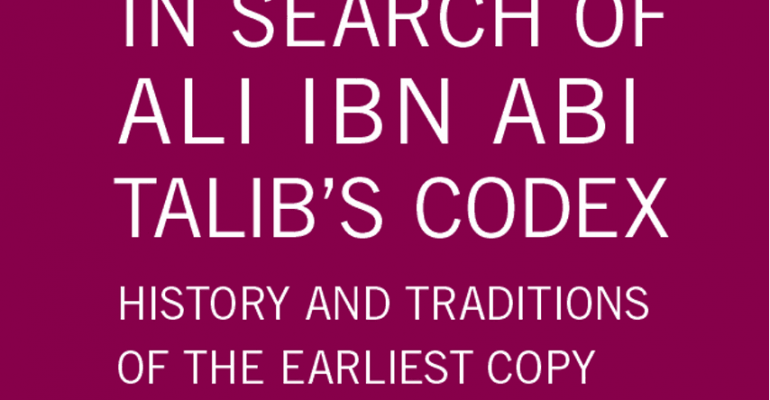
In Search of Ali Ibn Abi Talib’s Codex: History and Traditions of the Earliest Copy of the Qur’an
Author: Seyfeddin Kara (Hartford Seminary)
Publisher: Gerlach Press (July 30, 2018)
The history of the text of the Qur’an has been a longstanding subject of interest within the field of Islamic Studies, but the debate has so far been focused on the Sunni traditions about the codices of Caliphs Abū Bakr and ʿUthmān b. ʿAffān. Little to no attention has been given to the traditions on ʿAlī b. Abī Ṭālib’s collection of the Qur’an. This book examines both Shiʿi and Sunni traditions on the issue, aiming to date them back to the earliest possible date and, if possible, verify their authenticity. To achieve this, the traditions are examined using Harald Motzki’s isnād-cum-matn method, which is recognized as an efficient tool in dating the early Islamic traditions and involves analysis of both matn (text) and isnād (chain of trans-mission) with an emphasis on finding a correlation between the two.
“Kara’s application of hadith criticism to Shi‘i sources is innovative as well as constructive. Respectful of others’ contributions, he nonetheless subverts conventional sceptical and starkly sectarianized approaches to Scriptural textual history.” (From the foreword by James Piscatori)
Table of Contents
Introduction
• Chapter 1: Western Scholarship and the Early History of the Qur’ān: A Short History of Qur’anic Studies in the West
– Discovering the Biblical Roots of the Qur’an
– Challenging the Muslim Narrations
– Syriac Influence on the Qur’an
– The Wansbrough School
– Decoding Wansbrough
– ‘Muslim Conspiracy’ Against the Qur’an
• Chapter 2: Muslim Response to the Criticisms of the Textual History of the Qur’an
– Convincing ‘Non-Believers’ of the Authenticity of the Qur’an: The Traditional Muslim Approach to the History of the Text
– Arguing Historicity of the Qur’an
– Use of Archaeological Data
• Chapter 3: The Shiʿi Approach to the History of the Collection of the Qur’ān
– Denial of Judeo-Christian Influence on the Qur’an
– The Issue of taḥrīf
– ʿAlī’s Codex in the Earliest Shiʿi Sources
– The Collection of the Qur’an at the Time of the Prophet
• Chapter 4: Introduction to isnād-cum-matn Methodology
– The isnād-cum-matn Method in the Assessment of the Sunni Traditions
– Regarding the Collection of the Qur’an
– Employment of the isnād-cum-matn Method on Fewer Variant Traditions
– Criticism of the Method
• Chapter 5: Traditions Attributed to Muḥammad Al-Bāqir
– Group One Variants
– Isnād Analysis
– Investigating the Identity of the Reporter
– An Analysis of al-Kāfī’s isnād Patterns
– Matn Analysis
– Group Two Variants
– Isnād Analysis
– Matn Analysis
– Group Three Variants
– Isnād Analysis
– Matn Analysis
• Chapter 6: Traditions Attributed to ʿAlī b. Abī Ṭālib
– Isnād Analysis
– A Brief Study of the Succession Crisis
– Matn Analysis
• Chapter 7: Traditions Attributed to Jaʿfar al-Ṣādiq
– Isnād Analysis
– Matn Analysis
• Chapter 8: Traditions Attributed to Ibn Sīrīn
– Isnād Analysis
– Matn Analysis
Miscellaneous
Conclusion
Source: Gerlach

